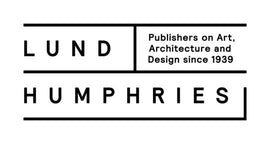Reflections of an Art Business Student: Lund Humphries and Sotheby's Institute of Art
Lund Humphries Marketing Intern and Sotheby's Institute of Art MA Student, Fabian Florea reflects on his experience in the world of art book publishing.



Lund Humphries has had a special relationship with Sotheby’s Institute of Art for many years. As a result of this special relationship I ended up completing the last semester of the Sotheby’s Institute Art Business Masters course as a Marketing Intern at Lund Humphries, structuring my weeks over two days of taught classes and three days in the Lund Humphries office.
When I first joined the Institute, publishing was not one of the career paths I had in mind, rather I didn’t quite know what I wanted to do - so I chose to figure that out in class. I had a vague idea of loosely specialising in photography, with no thought of the importance of publishing in the photography world, somehow unaware of the source of my photography book collection. I formerly studied History and took additional modules in English Literature and Fine Art at Goldsmiths College - an institution which I later found out was one of the cornerstones of the British art market. Suddenly I found myself intrinsically connected with major artists like Bridget Riley, Damien Hirst and Ian Davenport, and therefore an active cog in London’s expanding art world…
At Sotheby's Institute I was presented with a list of professional opportunities I could take in place of taught classes as a means to gain experience whilst completing my postgraduate studies. Owing to my extensive interest in Lund Humphries’ fantastic photography books, I applied to intern at Lund Humphries. Just after my first interview with the company, I realised that among my photography books, three were published by Lund Humphries. Alongside those, many academic books written by Sotheby’s Institute scholars, and now stacked on my bedroom desk, were also published by Lund Humphries. I’m currently reading Photography and the Art Market by Juliet Hacking, whose seminars I normally attend on Mondays at Sotheby's Institute of Art.
My experience at Lund Humphries continues to exceed expectations and has been posing a bit of a challenge to my ability to adapt quickly to changing work structures. I came into this job unaware of the vast amount of work involved in publishing. There are numerous challenges that arise throughout the process of working with books covering aspects of the notoriously complex art market. This has pushed me to begin thinking about the viability of certain books on the market rather than purely about their artistic and literary value. Lund Humphries has to look at books the way dealers look at fine art, and brainstorming target audiences and effective approaches to reach their audience. There are challenges at every step of the way and they do not end once a book is out and printed. Working with the marketing department has introduced me first-hand to all the components of good literary publicity. Who and what you have to think about when a book is released is an entirely subjective matter, and it can be radically different between each publication, so the workload only goes up during busy seasons.
One of Lund Humphries' ongoing series, Hot Topics in the Art World, (published in association with the Institute), represents another example of the Sotheby’s Institute-Lund Humphries relationship. The series is edited, and one volume is written, by academics from my current place of education. I can therefore certify that these topics are indeed hot and are currently being studied extensively in at least one academic institution. These books don’t have as clear an audience as a photography or architecture book might, so the marketing strategy here is a broad and challenging one. The art market is strange and obscure to most people, as it was to me before beginning this MA, therefore publishing books around it requires a keen approach to both experienced and non-experienced readers. The books in this series are actually accessible, with difficult topics explored in an articulate fashion where the writing style makes them approachable and absorbable even if you don’t have an Art History or Arts Management degree. Seeing how these books are pitched to arts publications has been one of the most important learning tools throughout this experience.
Working on many of the upcoming books here has made me pose more and more questions about the art market. Part of my work at Lund Humphries has been to stay up to date with events and exhibitions in the arts and culture sectors across the world, then using this information to inform my work for marketing campaigns. I’ve learned that art, photography and architecture books have a much more fundamental place within the art market than I would have previously assumed. Publishing these books is similar to curating a show, and working with artists whose entire careers are being exhibited within a couple hundred pages makes it all the harder.
- Fabian Florea, June 2022



